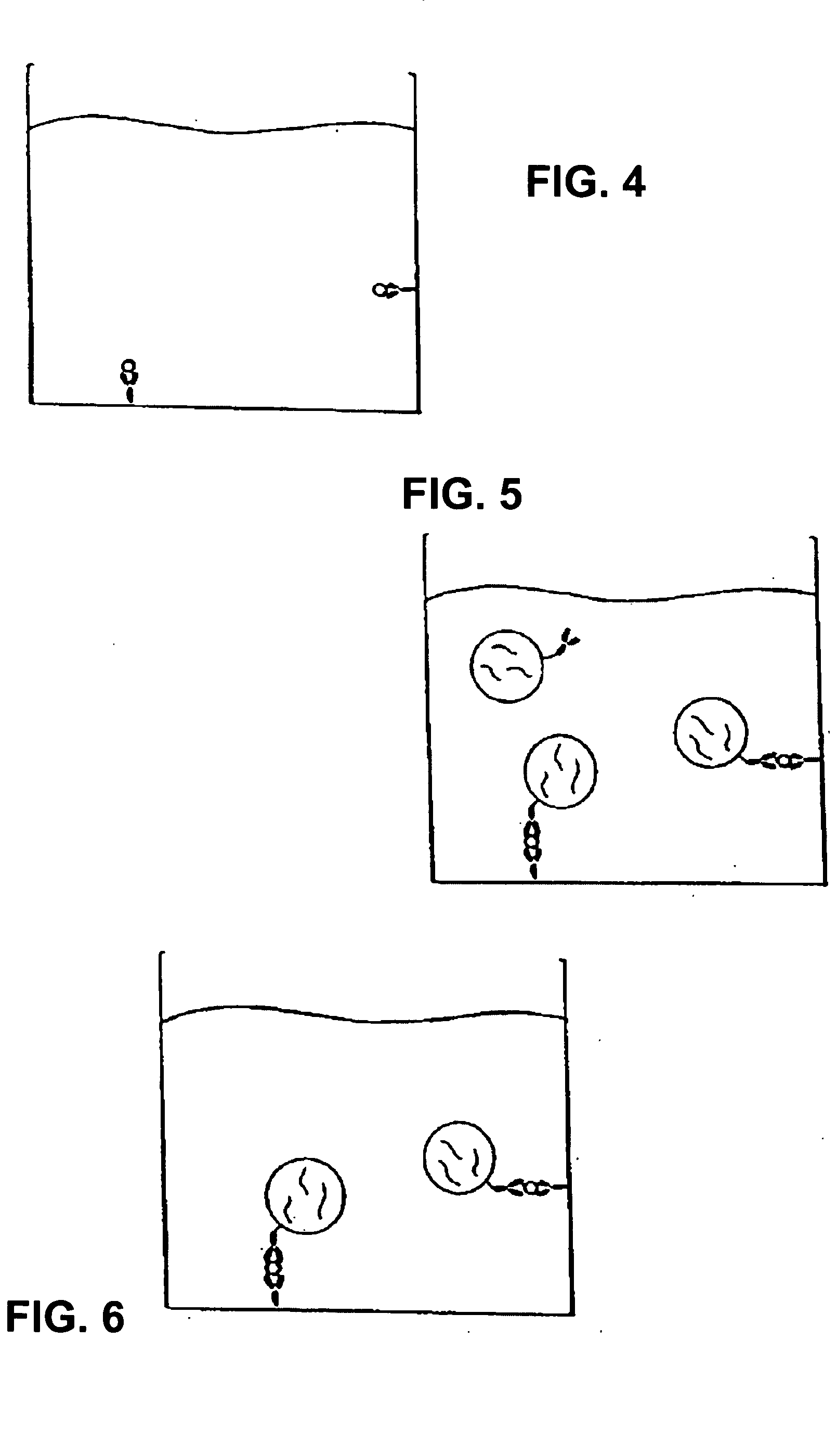Immunoliposome-nucleic acid amplification (ILNAA) assay
a technology of immunooliposome and nucleic acid, applied in the field of new assay systems, can solve the problems of reducing the likelihood of death or injury due to exposure, requiring examination of trace forensic evidence for involving biological toxins, and each of these techniques suffers from drawbacks and problems, so as to facilitate the incorporation of integral membrane proteins, facilitate the selection of attachment strategies, and enhance the range of attachment strategies.
- Summary
- Abstract
- Description
- Claims
- Application Information
AI Technical Summary
Benefits of technology
Problems solved by technology
Method used
Image
Examples
Embodiment Construction
[0180] The following recites a specific example of using the invention in connection with the detection of Cholera toxin using real-time PCR for quantifying the amount of toxin present. In this case, a monosialoganglioside (GM1) a ganglioside specific for Cholera toxin, was used as the specific receptor. The immunoliposomes were formed to encapsulate an amplification substrate, which in this case, comprised 50 copies of an 85 base-pair gene fragment for human β2-microglobin. This gene fragment (amplicon) serves as the detection agent to quantify the amount of Cholera toxin present in the test sample when amplified by real-time PCR. Notably, the human B2-microglobin gene fragment is chosen strictly for convenience. Any other amplicon can be used and incorporated into the immunoliposomes using this method.
Formation of Immunoliposomes
[0181] 1) To a volume of 2 mL of chloroform is added 40 mg of 1,2-dioleoyl-sn-glycero-3-phosphocholine (DOPC), 4 mg of lissamine-rhodamine-1,2-dihexadec...
PUM
| Property | Measurement | Unit |
|---|---|---|
| diameters | aaaaa | aaaaa |
| diameter | aaaaa | aaaaa |
| pH | aaaaa | aaaaa |
Abstract
Description
Claims
Application Information
 Login to View More
Login to View More - R&D
- Intellectual Property
- Life Sciences
- Materials
- Tech Scout
- Unparalleled Data Quality
- Higher Quality Content
- 60% Fewer Hallucinations
Browse by: Latest US Patents, China's latest patents, Technical Efficacy Thesaurus, Application Domain, Technology Topic, Popular Technical Reports.
© 2025 PatSnap. All rights reserved.Legal|Privacy policy|Modern Slavery Act Transparency Statement|Sitemap|About US| Contact US: help@patsnap.com



